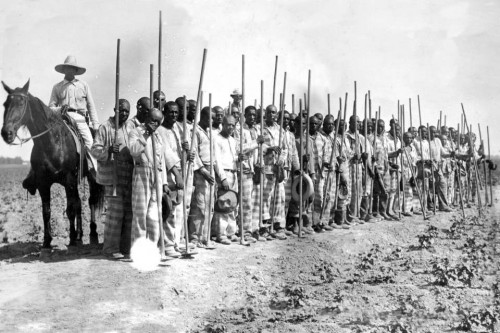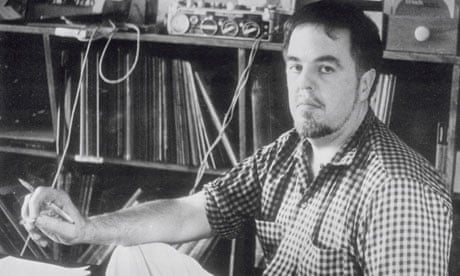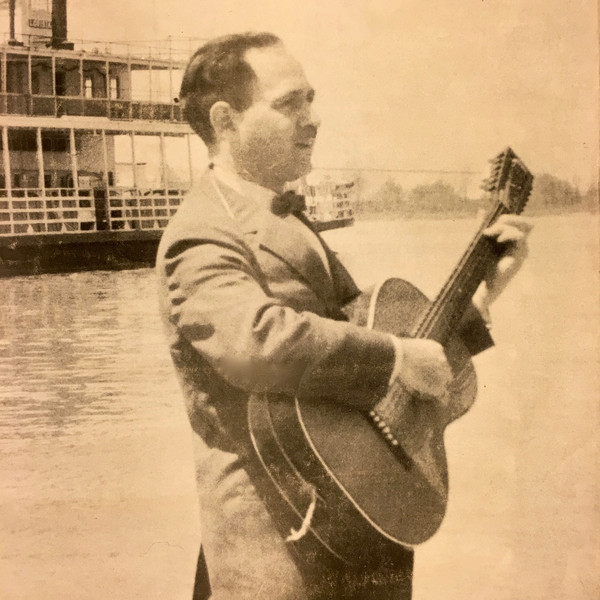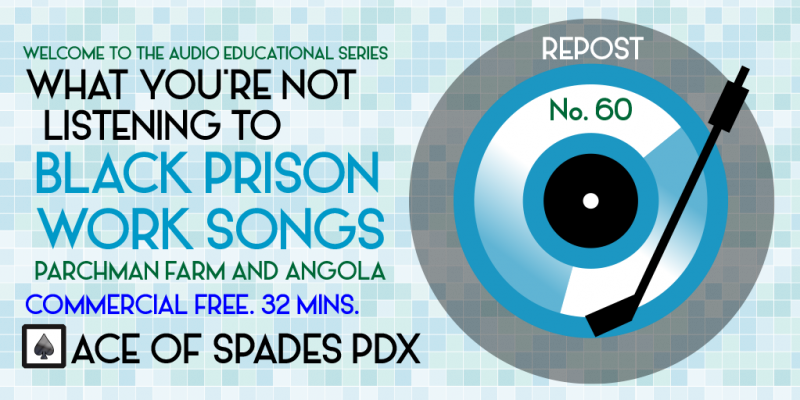Podcast: Play in new window | Download | Embed
Mid-20th Century historical recordings of Black men and women in two of the most notorious and dangerous jails in the U.S. #blues #folkmusic #prisonsongs #acappella
There has been a great deal of talk about how people, primarily white people, somehow believe they feel like they are in prison and that they are being treated like slaves during the current COVID-19 pandemic. Am I going to tell you that they are full of it? Why yes I am. Statements like these illustrate an ignorance and white privilege I haven’t heard in quite some time. It also demonstrates that these same people probably have never done real, hard time anywhere.

To prove this thesis, during this program, I am going to take you back to the late 1950’s to the deep southern United States, to maximum security sites considered places where a type of Jim Crow slavery still exists, chain gangs still work farms and where living conditions are so bad the governor of one earlier this year is taking drastic steps to improve conditions.

During this 30 minute program, we will be revisiting music made by prisoners at two maximum security facilities with death row inmates, Parchman Farm in Mississippi and Angola in Louisiana. Unlike many programs that focus on this type of folk and blues music, we are also featuring women performers. Angola, until 1961, actually housed male and female inmates in separate buildings at the same location.

Although there are recordings from these places during these eras featuring guitars and harmonicas, all of these performances will be a capella, vocals with no musical accompaniment. These type of performances were directly descended from Black slaves as they worked the farms and fields before being emancipated and before the end Civil War. The background sounds that are heard during some of the performances are the inmates themselves working while singing to pass the time and monotony of their truly grueling work schedule.

These recording were made by two of the most important ethnomusicologists in American history, Alan Lomax, who recorded so much ethnic, blues and folk music from around the world he is literally without peer, and Dr. Harry Oster, who founded the Louisiana Historical Society and recorded a wide variety of folk music from all over the country outside of his adopted home.
These recordings helped bring the plight of rural, incarcerated Blacks to the fore, detailing despair and hopelessness not heard by hardly anyone outside of their small worlds. Seemingly time and circumstance have stood still for prisoners in these facilities, where conditions at these them are even worse now during this pandemic for people of color, the incarcerated and the poor (and as they always have been in the Southern United States) than they were when these recordings originally took place.
First Part
- Prettiest Train*, performed by the Parchman Farm Chain Gang
- I Miss You So**, Angola Vocal Group
- The Moon Is Rising**, performed by Odea Matthews
- No More My Lawd*, performed by the Parchman Farm Chain Gang
- Soldier’s Plea**, performed by Clara Young
- Jumpin’ Judy*, performed by the Parchman Farm Chain Gang
- Hello Sue**, performed by Butterbeans
- I’m Still In Love With You**, performed by Thelma Mae Joseph
Finale
- Interview Segment: “What Makes A Good Song Leader”*, performed by the Parchman Farm Chain Gang
- Rosie*, performed by the Parchman Farm Chain Gang
*recorded by Alan Lomax, 1957, Mississippi State Penitentiary
**recorded by Dr. Harry Oster, 1958, Louisiana State Penitentiary
Love to you all.
Ben “Daddy Ben Bear” Brown Jr.
Host, Producer, Webmaster, Audio Engineer, Researcher, Video Promo Producer and Writer
“Copyright Disclaimer Under Section 107 of the Copyright Act 1976, allowance is made for ‘fair use’ for purposes such as criticism, comment, news reporting, teaching, scholarship, and research. Fair use is a use permitted by copyright statute that might otherwise be infringing. Non-profit, educational or personal use tips the balance in favor of fair use.”
